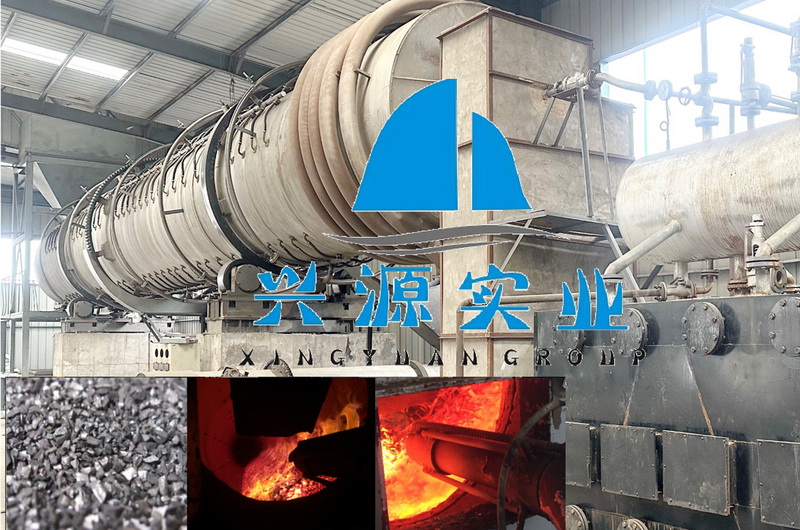2023 Xingyuan Add New Activated Carbon Equipment- Steam Activation Rotary Kiln
2023 April 22, Xingyuan New Member for activated carbon production line- Multi- Steam Injection Activated Carbon Rotary Kiln 1 Set Start Running .
This New production line equipt by Xingyuan Biotech .
Daily capacity shell based activated carbon/charcoal 3.5MT.

Xingyuan Activated Carbon Equipment Multi-Steam Activation –Rotary Kiln
Steam activation is the most widely used process because it is generally used to activate both coconut shell and coal based carbons. Steam activated carbons are produced in a two-stage process. Firstly the raw material, in the form of lumps, pre sized material, briquettes or extrudates, is carbonized by heating in an inert atmosphere such as flue gas, so that dehydration and devolatilization of the carbon occur. For this stage temperatures usually do not exceed 700 C. Carbonization reduces the volatile content of the source material to under 20%. A coke is produced which has pores that are either small or too restricted to be used as an adsorbent.
The second stage is the activation stage which enlarges the pore structure, increases the internal surface area and makes it more accessible. The carbonized product is activated with steam at a temperature between 900C and 1100C. The chemical reaction between the carbon and steam takes place at the internal surface of the carbon, removing carbon from the pore walls and thereby enlarging the pores. The steam activation process allows the pore size to be readily altered and carbons can be produced to suit specific end-sues. For an example, the pore structure has to be opened up more for the adsorption of small molecules from a solution, as in water purification, than for the adsorption of large colour molecules in sugar decolorization.
Steam Activation produce activated carbon in the from of 1mm to 3mm pieces, which are crushed and screened to remove fines and dust to meet the specifications for granular activated carbons. To produce powdered activated carbons, the carbon pieces are further ground using a gentle pulverizing action.











